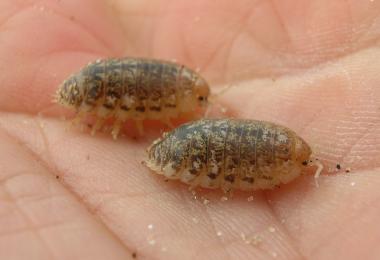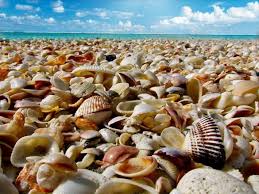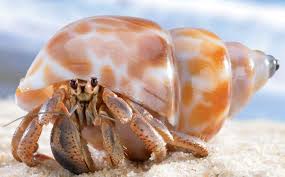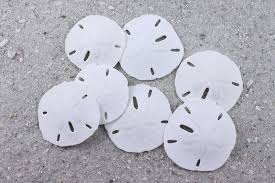

Hidden under the sand in temporary burrows or nestled in the kelp wrack, sand dwelling animals associated with different parts of the beach are constantly shifting position with the tide. These small creatures swim, scud, hop and crawl up and down the beach, travelling many meters a day. Their habitat is never confined to one location; they can move any direction on the beach to follow changes in beach width and conditions.

A shell is a hard outer layer, which has evolved in a very wide variety of different animals, including molluscs, sea urchins, crustaceans, turtles and tortoises, and armadillos. See the fact file below for more information about shells. Common types of shells include sea shells, snail shells, turtle shells and eggshells. There are more than 50,000 varieties of mollusk shells. Some open like clam shells, while others are shaped in a spiral and have a single hold where the animals enters and exits the shell.

Hermit crab is crustacean that belongs to the superfamily Paguroidea which includes 7 different families of hermit crabs. There are around 1100 species of hermit crab that can be found all over the world. Most types of hermit crabs are adapted to the life in the ocean, while some species spend their life on the solid ground. Marine hermit crabs can be found both in the shallow coastal waters and in a deep sea, while terrestrial species usually inhabit tropical areas. Caribbean, Ecuadorian, strawberry and tawny hermit crab are some of the most popular species of hermit crab that are often collected from the wild and sold as pets.

Sand dollars are marine invertebrates that belongs to the group of echinoderms. They are closely related to starfish, sea cucumbers and sea urchins. Sand dollars can be found in the temperate and tropical parts of Atlantic and Pacific Ocean. They live on the sandy sea floor, usually in the intertidal zone (near the beaches), or (rarely) away from the shore, on a depth of 30 feet. Pollution of the sea, habitat destruction and by-catch (they end up trapped in the shrimp trawls by accident) are the major threats for the survival of sand dollars in the wild. Despite these factors, sand dollars are numerous and widespread in the ocean.